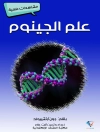This book covers the most recent developments in the field of osteochondral tissue engineering (OCTE) and covers in detail the concepts and current challenges for bone and cartilage repair and regeneration. Specific topics include viscosupplementation, biologicals, tissue engineering approaches, in vitro and in vivo models, and technological advances with stem cells, bioreactors, and microfluidics. Osteochondral Tissue Engineering: Challenges, Current Strategies, and Technological Advances presents challenges and strategies in the field of osteochondral regeneration and serves as a core reference for biomedical engineering students and a wide range of established researchers and professionals working in orthopedics.
Cuprins
Part I: Current Challenges in Osteochondral Repair and Regeneration: Trauma vs Disease.- Advances for treatment of knee OC defects.- Emerging Concepts in Treating Cartilage, Osteochondral Defects and Osteoarthritis of the Knee and Ankle.- Osteoarthritis: Trauma Vs Disease.- Surgical Treatment Paradigms of Ankle Lateral Instability, Osteochondral Defects and Impingement.- Part II: Viscosupplementation.- Clinical management in early OA.- Hyaluronic Acid.- Semi-IPNs and IPNs Based Hydrogels.- Promising biomolecules.- Part III: Technological Advances in Osteochondral Tissue Engineering.- Nanoparticles-based systems for Osteochondral Tissue Engineering.- Stem cells for osteochondral regeneration.- PRP Therapy.- Enhancing biological and biomechanical fixation of osteochondral scaffold: a grand challenge.- Part IV: Osteochondral Tissue Engineering approaches.- Combination of polymeric supports and drug delivery systems for ostechondral regeneration.- Osteochondral Angiogenesis and Promoted Vascularization: New Therapeutic Target.- Models Of Disease.- Part V: In vitro models for Osteochondral Regeneration.- Tissue Engineering Strategies for Osteochondral Repair.- In vitro mimetic models for the bone-cartilage interface regeneration.- Bioreactors and microfluidics for osteochondral interface maturation.- Part VI: In vivo models for Osteochondral Regeneratio.- n Small Animal Models.- Large animal models for Osteochondral Regeneration.- Index.
Despre autor
Dr. Joaquim Miguel Oliveira, BSc, Ph D is a senior researcher “Investigador FCT 2012 and FCT 2015” at the Portuguese Government Associate Laboratory ICVS/3B´s-University of Minho. Currently, he is a volunteer lecturer at the Faculty of Medicine, U. Porto and Dept. of Polymer Eng., UM. Since 2001, he has been involved in the development of biomaterials from natural origin for tissue engineering and regenerative medicine. His research activities have been increasingly focused on nanomedicine, stem cells and 3D in vitro models of disease.
Dr. Sandra Pina, Ms C, Ph D, is an assistant researcherat the Portuguese Government Associate Laboratory ICVS/3B’s, University of Minho. Her research interests include bioresorbable calcium phosphate-based nanomaterials and ionic incorporated calcium phosphates nanocomposites for internal fracture fixation in traumatology, cranio-maxillofacial, spine and orthopaedic surgery.
Prof. Rui L. Reis, Ph D, DSc, Hon. Causa MD (UGranada) is the Vice-Rector for R&D, Director of the 3B’s Research Group and of the ICVS/3B´s, of UMinho – Portugal. He is the CEO of the European Institute of Excellence on TERM, and the President-elect of Global TERMIS (Tissue Engineering & Regenerative Medicine International Society) and the editor-in-chief of the JTERM.
Prof. Julio San Roman, Ph D, is director of Instituto de Ciencia y Tecnología de Polímeros CSIC. His scientific activities are centred in the study and development of polymer systems for biomedical applications, and specifically in tissue engineering, polymer drugs and drug delivery systems.












